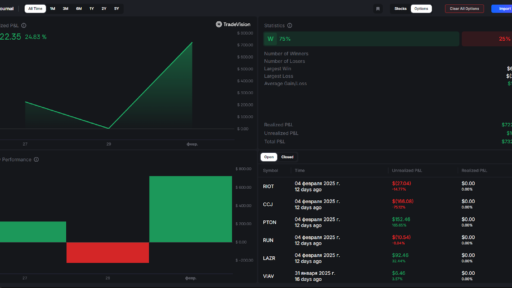Stock market investing can be a transformative path to financial growth, yet it demands a solid grasp of market fundamentals, investment strategies, and the potential risks. Here’s a personalized guide to understanding stocks, investment approaches, and trading nuances.
Decoding Stocks
What Exactly Are Stocks? Stocks are essentially units of ownership in a company. When you buy a stock, you’re acquiring a portion of that company. This ownership might grant you dividends, which are shares of the company’s profits, and voting rights at company meetings. Companies issue stocks through an initial public offering (IPO) to generate capital for expansion and other needs.
Different Categories of Stocks
- Common Shares: Provide voting rights on corporate decisions and potential dividend income.
- Preferred Shares: Offer dividend payments before common stockholders and have a superior claim on assets in the event of liquidation, though they typically lack voting rights.
- Growth Shares: Issued by companies expected to experience rapid growth relative to their industry, these stocks usually reinvest profits rather than pay dividends.
- Income Shares: Known for delivering regular dividend payments, these stocks are ideal for investors seeking consistent income.
- Value Shares: Priced below their intrinsic value based on fundamental analysis, offering the potential for price appreciation as market perceptions adjust.
- Blue-Chip Shares: Represent stakes in large, established companies with a history of reliable performance and stability.
Getting Started with Stock Market Investing
- Define Your Investment Goals: Clearly outline what you aim to achieve—be it long-term growth, steady income, or a mix of both.
- Pick the Right Brokerage: Choose a brokerage platform that fits your investment style. Consider factors such as fees, educational resources, and ease of use.
- Set a Budget: Determine the amount of money you can invest. A prudent approach is to allocate no more than 10% of your portfolio to any single stock to diversify risk.
- Understand Order Types: Learn the difference between market orders (buy/sell at current prices) and limit orders (buy/sell at a specific price) to manage your trades effectively.
- Conduct Thorough Research: Before buying stocks, investigate the companies of interest. Review financial performance, industry trends, and broader economic factors. Annual reports and historical data are valuable resources.
Evaluating Risks and Rewards in Stock Market Investing
Rewards:
- Appreciation Potential: Stocks can increase in value over time, leading to substantial returns.
- Dividend Income: Regular dividends can enhance your overall returns.
- Tax Benefits: Long-term capital gains are often taxed more favorably than ordinary income.
Risks:
- Market Fluctuations: Stock prices can be volatile, potentially leading to short-term losses.
- Company-Specific Risks: A company’s poor performance can result in a decline in its stock price, affecting your investment.

Exploring Investment Strategies in Stock Market Investing
- Buy and Hold: This strategy involves purchasing stocks and retaining them for an extended period, irrespective of short-term market movements.
- Dollar-Cost Averaging: Investing a fixed amount of money at regular intervals can help mitigate the impact of market volatility.
- Value Investing: Focuses on finding stocks that are undervalued based on fundamental analysis, with the goal of long-term gains as the market corrects.
- Growth Investing: Targets companies with high growth potential, often in emerging fields like technology or healthcare.
- Day Trading: Involves making trades within the same day to benefit from short-term price movements. This method requires a deep understanding of market trends and can be risky for beginners.
Final Thoughts
Stock market investing holds significant potential for wealth accumulation, but it also involves inherent risks. By gaining a clear understanding of different types of stocks, developing a well-rounded investment strategy, and continuously educating yourself, you can navigate the stock market with greater confidence. Always invest responsibly, considering only what you can afford to lose, and seek professional advice when needed.































































































